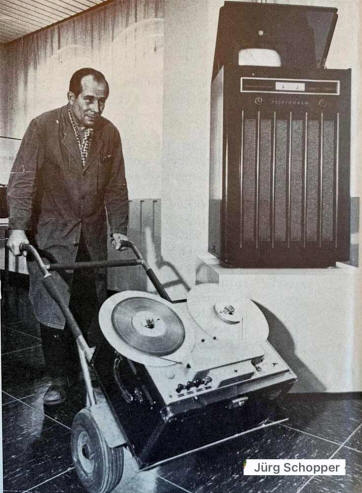

| It can't be reasoned with. It
doesn't feel pity, or remorse, or fear. And it absolutely will not
stop... ever, until you are dead! Terminator |
D Vautier
1/2023
It took around 100 years of various and often unrelated inventions to get from the first acoustic recordings into a decent state of somewhat high fidelity music. This evolution required a number of things to happen, often in spurts and jerks, as I discussed here at length. One important spurt in the chain, often overlooked, was the magnetophon which, quite by accident, was able to capture and reproduce high quality sound. This was a big advancement in high fidelity and way ahead of its time.
 The magnetophon first appeared
in Germany in 1935 and was no big deal.
Around 1941 it was said, a machine broke down because one of the coils
shorted and started arcing, imparting a weird 10 KC bias to the
recording head, or roughly ten times listening range. So the
machine was brought in to be fixed. The repair people were
astonished at the improvement in sound quality and installed similar
features on all the other magnetophons.
The magnetophon first appeared
in Germany in 1935 and was no big deal.
Around 1941 it was said, a machine broke down because one of the coils
shorted and started arcing, imparting a weird 10 KC bias to the
recording head, or roughly ten times listening range. So the
machine was brought in to be fixed. The repair people were
astonished at the improvement in sound quality and installed similar
features on all the other magnetophons.
This single accomplishment cleared the way for vast improvements in music quality although none of this saw the light of day outside Germany because of World War II.
Allied intelligence in fact was mystified because Hitler suddenly seemed to be giving speeches in many places at the same time. He was simply recording his speeches on a magnetophon and having them broadcasted later from different stations. After the war one of the big trophies for both the allied forces and the recording industry as well was the magnetophon.